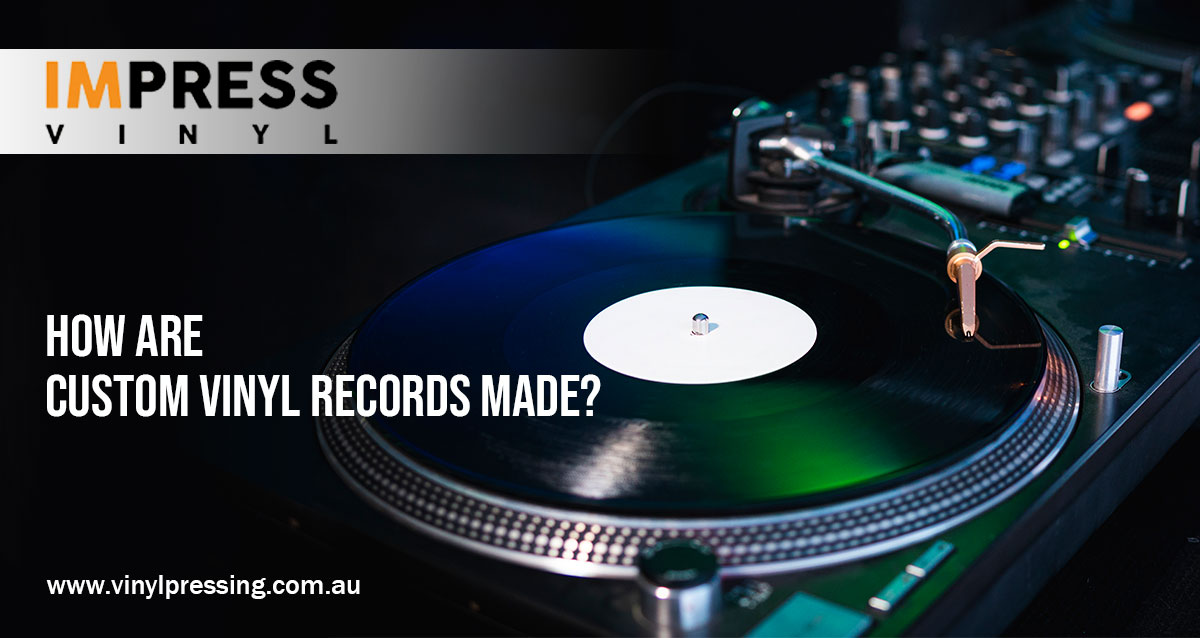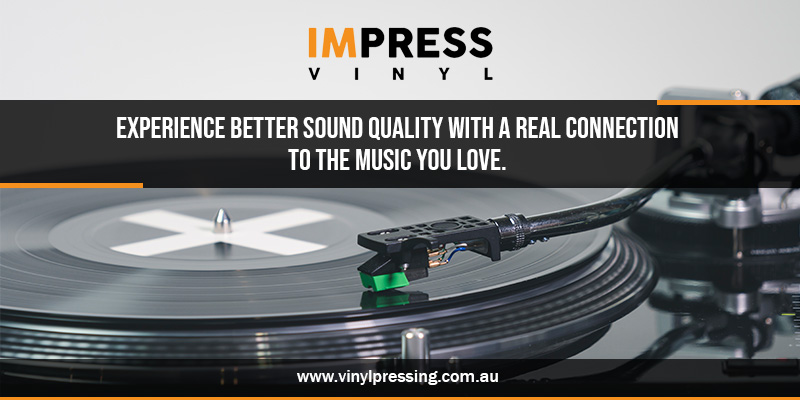Know the process of pressing Vinyl Records

Music is one of the universal art forms globally and is a nearly constant part of our everyday lives. Who would have guessed that a way to play popular music 100 years ago would be roaring in popularity today by pressing vinyl records?
Impress produces custom vinyl records in Australia, allowing fans to cherish the moment of popping their favourite record down on the turntable by lying back on a cosy chair and hearing the warm sound of music.
But have you ever wondered how vinyl records work? How does the song we love get physically pressed into this beautiful physical medium? Let us take you through making custom vinyl records in Australia.
A Complete Guide to Pressing Vinyl Records In Australia
We’re going to describe the step-by-step process of how to press your own vinyl records, ready to be played or sold. Let’s assume that the song, or album, has been recorded, mixed and mastered.
The audio file will be physically cut into a master disc. With these simple four steps, you can create your own vinyl record in Australia. But don’t forget to select your desired custom record jacket and artwork production after pressing vinyl records.
Making the Lacquer Disc
Pressing vinyl records needs an excellent sounding source material. The first step in a custom vinyl pressing plant is to create the lacquer disc.
An experienced vinyl engineer takes a flat aluminium disc and coats it with a lacquer veneer. It is vital in this phase to keep the dust away from the surface of the lacquer sides to prevent any imperfections.
The lacquer disc has two sides, A & B. During the final pressing stage, labels are pasted on the custom vinyl record and bonded with the vinyl.
Recording Sound onto the Lacquer Disc
Process of custom vinyl pressing start with an engineer placing the blank disc onto a lathe. This machine has a heated sapphire designed to engrave grooves into the lacquer surface of the disc.
As the recorded sound plays through the machine, the sapphire tips cut the recordings sound wave into the surface of the disc, with a small vacuum sucking up the lacquer.
The recorded sound will be engraved into the disc as one continuous spiral groove, a physical manifestation of the frequency and amplitude.
Once the cutting is complete, the sapphire tip is lifted, and the vinyl engineer checks the disc for any defects. Although the recording has cut into the disc, the lacquer surface is far too delicate to repeat the same procedure.
These lacquer discs are used to test the sound transfer from the original recording onto the disc. The engineer or artist can reject the sound transfer if it is not perfect or continue the custom vinyl pressing process.
Preparing the Stamper
Create your own vinyl record in Australia by cutting the master record into two stampers representing the A & B side (each representing one side of the record) used in the record pressing process.
The lacquer disc is washed, sprayed with silver solution, and dipped in a tank of tin chloride. Through electroplating, tin molecules are drawn to the silver solution and leaving a metal layer formed on top. i.e. a reverse image of the master’s record used to press the actual records.
The metal version, known as the stamper, also called ‘father plate’, is removed from the lacquer disc and used as the mould to press the final vinyl records.
The lacquer disc with the negative image of the recording, also known as ‘mother plate’, i.e. grooves cut inwards, and the stamper is the positive, i.e. grooves coming outwards.
While custom vinyl pressing, you may have also noticed that this has just made a one-sided stamper. The process we’ve covered so far is for the A-side. Same procedure to be followed for B-side.
The Finished Vinyl
Vinyl engineer will load the side A and side B stampers onto the press, PVC pellets will load the hopper, which feeds an extruder. In the vinyl pressing phase, the PVC pellets can be coloured and mixed to create different tones of the finished record.
The vinyl pellets get heated up to ~350F, and hydraulic pressure pushes them together, squishing this PVC onto the outward-facing grooves of the stampers (the positive image of the sound recording) and pressing the record into existence.
As that stamper applies the heat and intense pressure, the vinyl fills all the grooves of the stamper, making the playable groove on the record. As that PVC material fills the grooves, you get excess on the edges of the trimmed vinyl record.
Once trimmed, the record is picked up and moved to the cooling station. This process keeps repeating itself for the run of records on that stamper.
The entire process usually takes about 30 seconds per record and is fully automated. Once the records are perfectly trimmed, the first step starts again with a new lacquer fed into the stamper to create top-notch custom vinyl records in Australia.
Impress vinyl, producing the best custom vinyl records in Australia. We offer a free CD run worth $400 with every vinyl pressing project. In-house engineers and designers will help you choose the best artwork for your jackets and sleeves with vinyl record packaging.
Check out our line of PDF templates to help you put together the artwork for your next vinyl record release. You can press your own vinyl in Australia at affordable rates with a fast turnaround time, delivered all over Australia and then onto the world.
